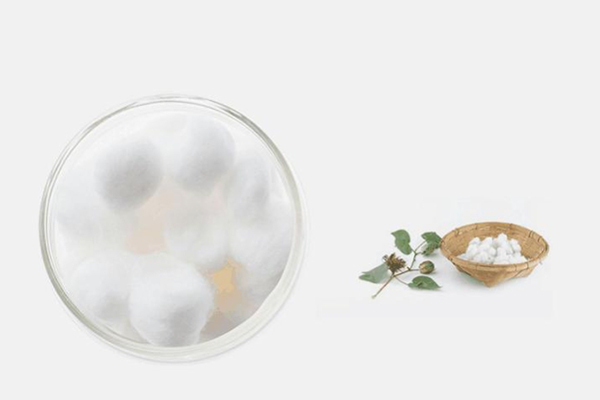Cotton is a widely used natural fiber, valued for its softness, absorbency, and versatility in various applications, ranging from clothing to healthcare. However, not all cotton is the same, particularly when it comes to its use in medical and non-medical contexts. Medical cotton and normal cotton differ significantly in terms of their processing, hygiene standards, applications, and safety measures. Understanding these differences is crucial, especially when selecting the appropriate cotton for specific uses.

1. Processing and Purity
One of the primary differences between medical cotton and normal cotton lies in their processing and purity.
- Normal Cotton: The cotton we typically encounter in fabrics, clothing, and household items is regularly processed for softness and comfort. Normal cotton may still contain natural impurities, such as oils, waxes, or residual chemicals from pesticides used during cultivation. While these are harmless for regular use in textiles, they can pose risks if applied to wounds or in sensitive environments like healthcare settings.
- Medical Cotton: Also known as absorbent cotton or surgical cotton, medical cotton undergoes an additional process to remove these impurities. The cotton is sterilized to eliminate any potential bacteria, fungi, or harmful substances. Medical cotton is treated to make it 100% pure and absorbent, which ensures it is safe for use in hospitals, clinics, and other healthcare environments. The removal of contaminants makes it hypoallergenic and non-irritating, which is essential when applied to open wounds or for direct contact with the skin.
2. Sterilization and Hygiene Standards
A critical distinction between the two types of cotton is the sterilization process they undergo.
- Normal Cotton: Regular cotton, used in clothes, bedding, and everyday items, does not require sterilization. Since normal cotton is not intended for medical purposes, it does not meet the stringent hygiene standards necessary to be classified as sterile. Therefore, using regular cotton for medical purposes or on open wounds is not recommended due to the potential for contamination and infection.
- Medical Cotton: Medical-grade cotton is produced under strict sanitary conditions and is sterilized to ensure it is free from pathogens. It adheres to higher hygiene standards, making it suitable for direct contact with the body in surgical settings or wound care. It is packaged and stored to maintain its sterility until it is used in medical procedures. Because of these stringent standards, medical cotton is safer for healthcare environments and is commonly found in first-aid kits, hospitals, and other medical settings.
3. Absorbency
Another significant difference between medical cotton and normal cotton is their level of absorbency.
- Normal Cotton: While normal cotton is still absorbent, its absorbency levels are generally lower compared to medical cotton. This is because regular cotton retains some of the natural oils and waxes that are not fully removed during processing. These substances can reduce the cotton’s ability to absorb liquids effectively, which is acceptable for clothing and everyday applications but less suitable for medical use.
- Medical Cotton: Medical cotton is specially processed to be highly absorbent. The removal of oils and other substances enhances its capacity to absorb blood, pus, or other fluids during medical procedures. This makes it an essential material in wound dressings, bandages, and surgical applications where efficient absorption is necessary to promote healing and prevent infection.
4. Applications and Usage
The difference in processing, sterilization, and absorbency naturally leads to differences in how medical cotton and normal cotton are used.
- Normal Cotton: Regular cotton is primarily used in the textile industry, where it is woven into fabrics for clothing, bed linens, towels, and other everyday products. Its comfort, breathability, and softness make it ideal for apparel and household items. However, it is not recommended for use in medical situations due to its lack of sterilization and lower absorbency.
- Medical Cotton: Medical cotton is designed for healthcare applications, including wound care, surgical dressings, and first aid. It is used in hospitals and clinics for tasks like cleaning wounds, applying medication, and absorbing body fluids. It is also commonly found in personal care products like cotton balls, swabs, and gauze, used for maintaining hygiene or treating minor injuries at home. Due to its high absorbency and sterility, medical cotton is preferred whenever direct contact with bodily fluids is involved.
5. Safety and Health Considerations
Another key difference between the two types of cotton is their impact on safety and health.
- Normal Cotton: While regular cotton is safe for use in clothing and household items, it may still contain pesticide residues, dyes, or other chemicals that can irritate sensitive skin, especially in people with allergies. Regular cotton is not suitable for use on open wounds or in medical environments due to the risk of contamination.
- Medical Cotton: Medical cotton is specifically processed to be hypoallergenic, making it ideal for sensitive skin and medical applications. Its sterility and purity ensure that it won’t cause infections or irritations when used in wound care or surgeries. Its higher safety standards make it indispensable in the medical industry.
Conclusion
In summary, the key differences between medical cotton and normal cotton lie in their processing, sterilization, absorbency, and applications. Medical cotton undergoes rigorous purification and sterilization processes to make it suitable for healthcare settings, where hygiene and safety are paramount. It is highly absorbent, making it ideal for wound care and surgical applications. Normal cotton, while useful in everyday products like clothing and linens, does not meet the same stringent standards and should not be used in medical contexts. Understanding these differences ensures that the right type of cotton is chosen for the appropriate use, whether it’s for everyday wear or critical medical care.
Post time: 10月-24-2024





